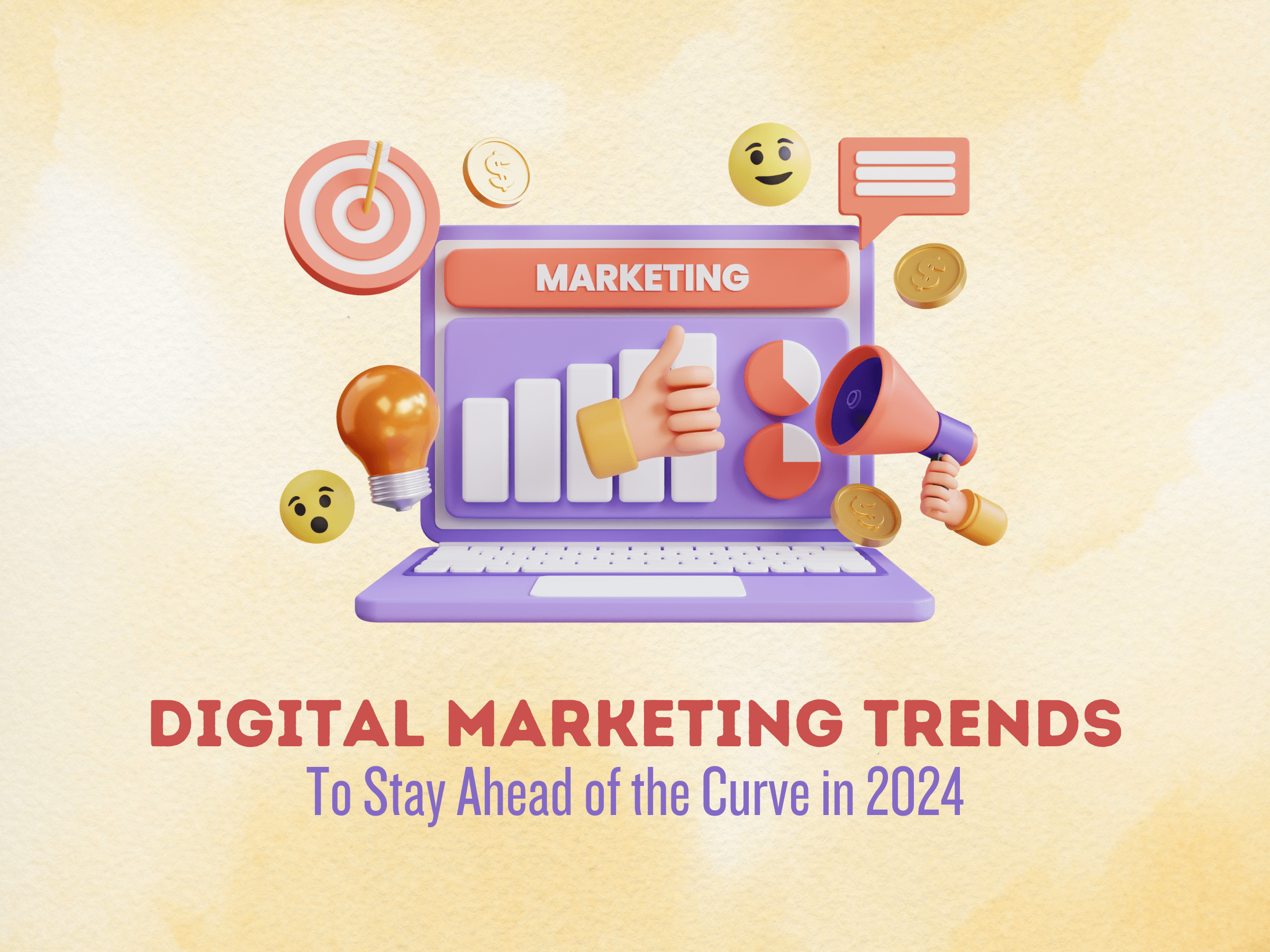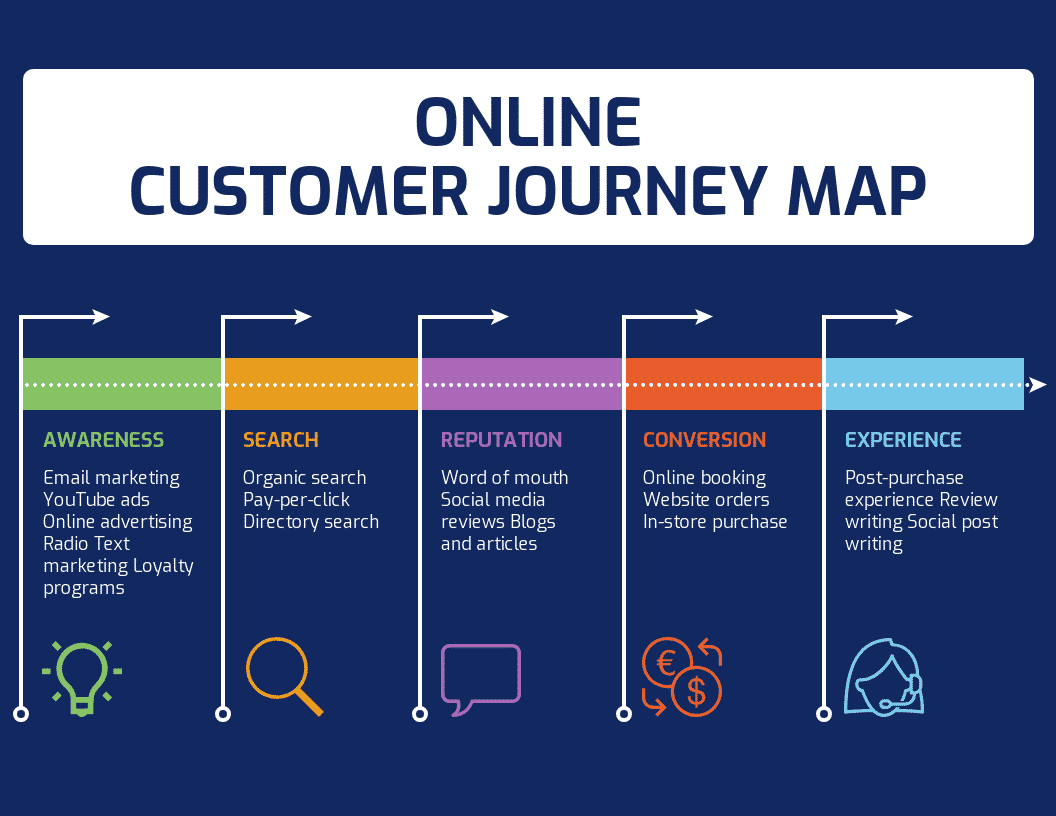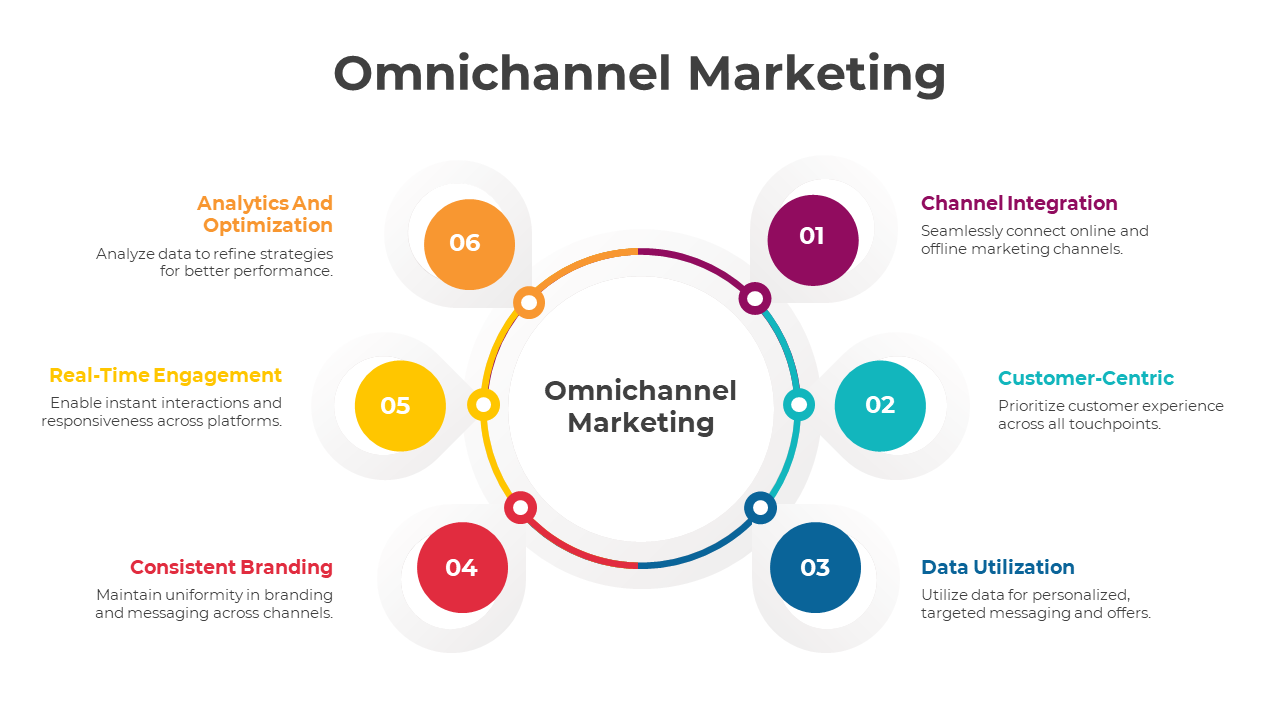The Future of Digital Marketing: Predictions and Strategies for Staying Ahead
Introduction
Digital marketing is an ever-evolving field, shaped by technological advancements, changing consumer behaviors, and emerging trends. As we look to the future, businesses must adapt and innovate to stay ahead of the curve. In this blog post, we will explore key predictions for the future of digital marketing, including the evolving consumer landscape, the increasing influence of social commerce, and the growing importance of data privacy. Additionally, we will provide actionable strategies that businesses can adopt to remain competitive and successful in this dynamic environment.

Index
- The Evolving Consumer Landscape
- The Rise of Social Commerce
- The Growing Importance of Data Privacy
- The Impact of Artificial Intelligence and Machine Learning
- The Expansion of Augmented Reality and Virtual Reality
- The Importance of Omnichannel Marketing
- Frequently Asked Questions
- Conclusion: Staying Ahead in the Future of Digital Marketing
The Evolving Consumer Landscape
The digital landscape is constantly shifting, and so are consumer behaviors and expectations. Today’s consumers are more informed, connected, and empowered than ever before. They demand personalized experiences, instant gratification, and seamless interactions across all touchpoints.

Key Trends
- Increased Mobile Usage: Mobile devices continue to dominate, with more consumers using smartphones for browsing, shopping, and social interactions.
- Voice Search and Smart Assistants: The growing popularity of voice-activated devices like Amazon Alexa and Google Home is changing how consumers search for information and make purchases.
- Personalization: Consumers expect tailored experiences that cater to their preferences and needs, making personalized marketing more critical than ever.
Actionable Strategies
- Optimize for Mobile: Ensure your website and content are mobile-friendly to provide a seamless experience for mobile users.
- Leverage Voice Search: Optimize your content for voice search by incorporating conversational keywords and providing concise, accurate answers.
- Invest in Personalization: Use data and analytics to deliver personalized content, product recommendations, and offers to your audience.

The Rise of Social Commerce
Social commerce, the integration of e-commerce and social media, is rapidly gaining traction. Platforms like Instagram, Facebook, and Pinterest are becoming powerful sales channels, allowing businesses to reach and engage consumers directly where they spend their time.
Space for Image: 
Key Trends
- Shoppable Posts: Social media platforms are introducing features that enable users to purchase products directly from posts and stories.
- Influencer Marketing: Influencers play a significant role in driving social commerce, leveraging their large followings to promote products and brands.
- Live Shopping: Live streaming has become a popular way to showcase products in real-time, offering interactive and engaging shopping experiences.
Actionable Strategies
- Create Shoppable Content: Utilize shoppable posts and tags on social media platforms to make it easy for consumers to purchase products.
- Collaborate with Influencers: Partner with influencers relevant to your industry to reach a broader audience and build trust with potential customers.
- Experiment with Live Shopping: Host live shopping events to showcase products, answer questions, and engage with your audience in real-time.

The Growing Importance of Data Privacy
As data breaches and privacy concerns become more prevalent, consumers are increasingly aware of how their data is being used and protected. Data privacy is not only a legal requirement but also a crucial factor in building trust and loyalty with your audience.

Key Trends
- Stricter Regulations: Laws like GDPR and CCPA are enforcing stricter data privacy regulations, requiring businesses to be transparent about data collection and usage.
- Consumer Awareness: Consumers are more conscious of their privacy rights and expect businesses to handle their data responsibly.
- Data Security: Ensuring robust data security measures is essential to protect consumer information and maintain trust.
Actionable Strategies
- Comply with Regulations: Stay informed about data privacy laws and ensure your business complies with all relevant regulations.
- Be Transparent: Clearly communicate your data collection and usage policies to consumers, providing them with control over their data.
- Invest in Security: Implement strong data security measures to protect consumer information from breaches and cyberattacks.
The Impact of Artificial Intelligence and Machine Learning
Artificial Intelligence (AI) and Machine Learning (ML) are revolutionizing digital marketing by enabling more efficient, effective, and personalized marketing strategies. These technologies are transforming how businesses analyze data, engage with customers, and optimize campaigns.

Key Trends
- Predictive Analytics: AI-powered tools can analyze vast amounts of data to predict consumer behavior and trends, allowing businesses to make informed decisions.
- Chatbots and Virtual Assistants: AI-driven chatbots provide instant customer support and personalized interactions, enhancing the customer experience.
- Content Generation: AI can generate personalized content at scale, tailoring messages to individual preferences and behaviors.
Actionable Strategies
- Utilize Predictive Analytics: Leverage AI tools to analyze data and predict consumer trends, helping you stay ahead of the competition.
- Implement Chatbots: Use AI-powered chatbots to provide 24/7 customer support and improve response times.
- Personalize Content: Use AI to create personalized content and recommendations, enhancing the relevance and effectiveness of your marketing efforts.

The Expansion of Augmented Reality and Virtual Reality
Augmented Reality (AR) and Virtual Reality (VR) are emerging technologies that offer immersive and interactive experiences, transforming how consumers engage with brands and products.

Key Trends
- Virtual Try-Ons: AR enables consumers to virtually try on products like clothing, accessories, and makeup, enhancing the online shopping experience.
- Immersive Brand Experiences: VR can create immersive brand experiences, allowing consumers to explore virtual environments and interact with products in innovative ways.
- Enhanced Product Visualization: AR and VR provide detailed and interactive product visualizations, helping consumers make informed purchase decisions.
Actionable Strategies
- Offer Virtual Try-Ons: Implement AR technology to allow customers to virtually try on products, reducing return rates and increasing satisfaction.
- Create Immersive Experiences: Use VR to create engaging and memorable brand experiences that differentiate you from competitors.
- Enhance Product Visuals: Leverage AR to provide detailed and interactive product visualizations, improving the online shopping experience.

The Importance of Omnichannel Marketing
Omnichannel marketing involves creating a seamless and integrated experience across all customer touchpoints, both online and offline. As consumers engage with brands through multiple channels, providing a consistent and cohesive experience is crucial.

Key Trends
- Integrated Customer Journeys: Consumers expect a seamless experience as they move between different channels and devices.
- Unified Data: Collecting and integrating data from all touchpoints provides a holistic view of the customer journey, enabling more personalized and effective marketing.
- Cross-Channel Consistency: Ensuring consistent messaging and branding across all channels is essential for building trust and loyalty.
Actionable Strategies
- Map the Customer Journey: Identify and optimize key touchpoints in the customer journey to provide a seamless experience.
- Unify Data: Integrate data from all channels to gain a comprehensive understanding of your customers and personalize your marketing efforts.
- Ensure Consistency: Maintain consistent messaging, branding, and experiences across all channels to build trust and loyalty with your audience.

Frequently Asked Questions
- What is the biggest trend in digital marketing?
- The biggest trend in digital marketing is the increasing use of AI and machine learning to analyze data, personalize content, and optimize campaigns.
- How can businesses prepare for the rise of social commerce?
- Businesses can prepare for social commerce by creating shoppable content, collaborating with influencers, and experimenting with live shopping events.
- Why is data privacy important in digital marketing?
- Data privacy is important because it builds trust with consumers, ensures compliance with regulations, and protects against data breaches.
- How can AI improve marketing strategies?
- AI can improve marketing strategies by providing predictive analytics, enhancing customer support with chatbots, and personalizing content at scale.
- What are the benefits of using AR and VR in marketing?
- AR and VR offer benefits such as virtual try-ons, immersive brand experiences, and enhanced product visualization, improving the customer experience.
- What is omnichannel marketing?
- Omnichannel marketing involves creating a seamless and integrated experience across all customer touchpoints, both online and offline.
- How can businesses optimize for voice search?
- Businesses can optimize for voice search by incorporating conversational keywords, providing clear and concise answers, and ensuring their business information is accurate.
- What role do influencers play in social commerce?
- Influencers drive social commerce by leveraging their influence and large followings to promote products and brands, reaching a wider audience and building trust with potential customers.
- How can businesses stay ahead in the evolving consumer landscape?
- Businesses can stay ahead by understanding consumer behaviors and preferences, offering personalized experiences, and leveraging emerging technologies like AI and AR.
- What are the key elements of a successful omnichannel marketing strategy?
- Key elements include mapping the customer journey, unifying data from all channels, ensuring cross-channel consistency, and providing seamless experiences across touchpoints.
Conclusion: Staying Ahead in the Future of Digital Marketing
As we look towards the future of digital marketing, it’s clear that businesses need to adapt and innovate to stay ahead of the curve. The evolving consumer landscape, the rise of social commerce, the growing importance of data privacy, and the impact of emerging technologies like AI, AR, and VR are reshaping the industry.
To thrive in this dynamic environment, businesses must:
- Embrace Personalization: Tailor experiences and content to individual preferences and behaviors.
- Leverage Emerging Technologies: Utilize AI, AR, and VR to enhance engagement and customer experiences.
- Prioritize Data Privacy: Build trust with consumers by ensuring transparent data practices and robust security measures.
- Optimize for Omnichannel: Provide seamless and integrated experiences across all customer touchpoints.
- Collaborate with Influencers: Partner with influencers to reach a wider audience and build brand credibility.
![]()
By adopting these strategies and staying agile in responding to industry trends and consumer demands, businesses can position themselves for success in the ever-evolving digital landscape.
In conclusion, the future of digital marketing holds exciting opportunities and challenges. By staying informed, adapting to emerging trends, and leveraging innovative strategies, businesses can not only survive but thrive in the digital age. Are you ready to shape the future of your digital marketing efforts? Contact us today to learn how we can help you stay ahead of the curve and achieve your business goals.



Comment:
Thank you for this insightful and comprehensive blog post on the future of digital
marketing. It’s fascinating to see how the landscape is
evolving, with trends like the increasing use of AI and machine learning, the rise of social commerce, and the growing importance of data privacy.
I particularly appreciate the actionable strategies provided
for businesses to stay ahead. The emphasis on personalization, leveraging emerging technologies, prioritizing
data privacy, optimizing for omnichannel marketing, and
collaborating with influencers are all crucial points.
As a digital marketer, I’ve seen firsthand the importance of staying agile and adapting to these trends.
For instance, implementing AI tools for predictive analytics and personalized content has significantly improved our marketing efforts.
Moreover, the focus on data privacy cannot be
overstated. With stricter regulations and growing consumer awareness, it’s essential to handle data responsibly and transparently.
This not only ensures compliance but also builds trust with our audience.
I look forward to seeing how these trends continue to shape the industry and am eager to implement the strategies discussed here.
Thank you again for this valuable resource.
Best regards,
Delphia
http://terios2.ru/forums/index.php?autocom=gallery&req=si&img=4549
Good https://is.gd/tpjNyL
Awesome https://is.gd/tpjNyL
Awesome https://lc.cx/xjXBQT
Awesome https://lc.cx/xjXBQT
Good https://lc.cx/xjXBQT
Your blog is a treasure trove of valuable insights and thought-provoking commentary. Your dedication to your craft is evident in every word you write. Keep up the fantastic work!